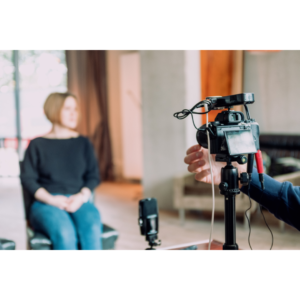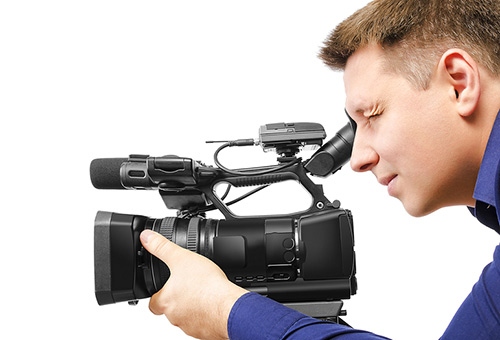Why Lawful Videography Is Essential for Accurate Legal Record-Keeping
In the realm of lawful procedures, the accuracy of record-keeping is vital, and lawful videography becomes a vital device in this context. By recording the subtleties of spoken and non-verbal communication, it considerably decreases the capacity for misconception that can go along with conventional written records. In addition, the conservation of genuine visual evidence not only enhances the reputation of testaments yet also contributes to a thorough account of occasions. As we explore the multifaceted advantages of legal videography, one need to consider its implications for the future of judicial honesty and transparency - legal videography.
Significance of Visual Proof
Establishing the relevance of aesthetic proof in lawful proceedings is extremely important for guaranteeing precise record-keeping and enhancing the total integrity of the judicial process. Aesthetic proof offers as an important tool in recording events, problems, and other essential information that might be important to a situation. Unlike written accounts, which are at risk to analysis and bias, visual recordings provide an objective, unalterable depiction of facts as they happened.


This form of proof can catch a variety of components, consisting of witness habits, environmental context, and physical proof, all of which may influence judicial outcomes. By presenting a clear and detailed aesthetic story, legal videography eliminates ambiguity and helps to preserve the authenticity of the proof.
Moreover, aesthetic evidence can be important in lowering conflicts over factual inconsistencies, as it permits a direct contrast against testimony and other recorded documents. In an age where electronic technology is significantly prevalent, the ability to existing visual evidence successfully can considerably boost the total top quality of legal procedures. Inevitably, the incorporation of aesthetic proof not just reinforces the documentation process yet also strengthens public rely on the judicial system by promoting openness and responsibility.
Enhancing Statement Trustworthiness
The integration of legal videography right into courtroom process dramatically boosts the integrity of witness statement. By capturing the nuances of verbal and non-verbal interaction, video recordings offer an even more comprehensive depiction of a witness's demeanor, feelings, and dependability. This aesthetic documentation allows jurors to observe the witness's body language, face expressions, and overall presence, which are essential parts that can affect their assumption of statement reputation.
Moreover, lawful videography reduces the possibility for false impression or distortion of testament that may take place in written transcripts. Audiences can see and hear the testimony as it existed, ensuring that the context and tone are preserved. This credibility cultivates a greater sense of depend on among jurors, who may be extra inclined to believe testimony that they can witness firsthand.
In addition, the existence of video footage can hinder witnesses from providing misleading or exaggerated statements, as they are conscious that their testament is being taped. This responsibility enhances the honesty of the judicial procedure. Inevitably, legal videography offers he has a good point as an important tool in making certain that witness testament is not just precisely portrayed but likewise viewed with enhanced trustworthiness by all parties included.
Comprehensive Record Conservation
Comprehensive record conservation is crucial for keeping the integrity of lawful procedures. Legal videography serves as a crucial device in this process, giving an accurate visual and auditory account of statements, depositions, and various other zero hours in a case. Unlike conventional written transcripts, video clip recordings capture the subtleties of body movement, tone, and emotion, which are crucial for understanding the context and intent behind declarations made throughout lawful procedures.

Additionally, the capability to evaluate video clip evidence allows attorneys to determine crucial details that may have been forgotten in written records. By preserving a comprehensive archive of legal procedures via videography, law office can promote the highest requirements of accuracy and liability, eventually adding to a fairer judicial procedure.
Improving Legal Process
Simplifying lawful procedures is essential for enhancing effectiveness and decreasing hold-ups within the judicial system. Lawful videography works as a crucial device in achieving this goal by offering clear and accurate aesthetic documentation of court hearings, depositions, and testaments. This modern technology permits real-time recording, making sure that all verbal and non-verbal signs are captured, which can assist in quicker resolution of conflicts.
The assimilation of videography into legal procedures decreases dependence on standard approaches, such as extensive transcripts, which can be time-consuming to generate and assess. By having accessibility to recorded video footage, attorneys can swiftly reference key minutes, improving their ability to prepare and existing cases efficiently. This immediacy also helps in the clearing up of testaments, decreasing the possibility for misinterpretation.
Furthermore, visual documents cultivates an extra engaging courtroom experience for jurors, helping them helpful site to comprehend complex information a lot more conveniently. Inevitably, legal videography enhances interaction among all parties included, from attorneys to courts to jurors, thereby advertising a more reliable judicial process (legal videography). In an age where time is important, accepting this innovation is vital for the modern-day lawful landscape
Admissibility in Court
Exact documentation is crucial not only for efficiency but likewise for ensuring that evidence is permissible in court. Legal videography acts as a vital tool in this process, giving a trustworthy visual document of testimonies, statements, and occasions. Courts commonly call for evidence to fulfill particular requirements of admissibility, including significance, credibility, and reliability. Top notch video recordings can satisfy these criteria by recording clear sound and aesthetic details that written transcripts may forget.
To be deemed permissible, lawful videography should stick to well-known methods, such as appropriate site link tools usage, appropriate illumination, and clear audio capture. In addition, it is necessary to have actually certified videographers who recognize the legal needs surrounding evidence collection. The chain of safekeeping should additionally be preserved to stop any insurance claims of meddling or change.
Moreover, legal videography can boost the persuasiveness of proof by giving jurors with a direct view of the testament, permitting for an extra engaged understanding of the situation. In recap, the combination of legal videography right into record-keeping not just supports effectiveness yet also strengthens the honesty and admissibility of evidence in court procedures.
Final Thought
In final thought, lawful videography plays a critical duty in guaranteeing accurate legal record-keeping by offering unbiased visual documentation. Ultimately, the consolidation of legal videography right into the judicial procedure advertises openness and reinforces public count on in the integrity of the legal system.